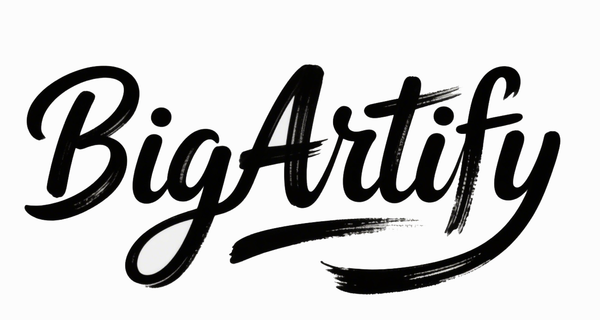The Timeless Beauty and Influence of Blue Abstract Painting
Blue abstract painting holds a special place in the art world, combining the emotional depth of the color blue with the limitless creativity of abstraction. This unique art form has intrigued artists and collectors for centuries, from early masters to contemporary visionaries, and remains a compelling choice for anyone seeking to add both serenity and energy to their space.
The Historical and Symbolic Significance of Blue in Abstract Art
The color blue has long been associated with spirituality, royalty, and introspection. Historically, blue pigments were rare and costly, often derived from lapis lazuli mined in Afghanistan, making blue a symbol of wealth and sacredness. This rich heritage shaped blue’s psychological connotations, inspiring many artists to explore its depth and versatility.
French artist Henri Matisse’s iconic Blue Nudes series demonstrates blue’s power to express both form and emotion through abstraction. Created late in his career using his technique of "cutting directly into color," these artworks reduce figures to elemental shapes bathed in shades of blue, emphasizing emotional clarity and simplicity. Learn more about Matisse and his pioneering work in Blue and Abstract Art - Ideelart.
Another revolutionary figure is Yves Klein, who in 1960 patented his signature International Klein Blue (IKB), a vibrant ultramarine that he used to create radical monochrome canvases. Klein saw blue as “beyond dimensions,” representing infinity and the immaterial. His groundbreaking work challenged traditional art boundaries and remains influential today, as explored in The 6000-Year History of Blue Pigments in Art - Artsy.

Masterpieces and Artists Defining Blue Abstract Painting
Wassily Kandinsky, regarded as a pioneer of abstract art, believed blue embodied spirituality and infinite depth. His painting In The Blue (1925) uses dynamic abstract forms against a rich blue background to evoke emotional and musical resonance. For further insight, visit In The Blue (1925) by Wassily Kandinsky.
Mark Rothko, famous for his color field paintings, harnessed deep blues in compositions like Blue, Orange, Red, employing vast swaths of color to inspire contemplation and evoke profound emotion. His work’s immersive quality demonstrates blue’s meditative potential. Learn more about Rothko’s use of blue at The Enigmatic Allure of Blue Abstract Art - Scott Kowalski.
Pablo Picasso’s Breakfast of a Blind Man from his Blue Period exemplifies the color’s association with melancholy and introspection, using aquamarine and muted blues to convey vulnerability and human suffering. Discover more about Picasso’s blue works at Explore 5 Famous Blue Paintings.
The Emotional and Aesthetic Appeal of Blue Abstract Paintings
Blue abstracts resonate emotionally by evoking calm, spirituality, and vastness—like the limitless sky or deep ocean. This emotional range makes blue an ideal choice for abstract expression, as it encourages viewers to lose themselves in color fields, shapes, and textures. Contemporary artists Jeremy Prim, Elena Ilieva, and Elaine Jones create works inspired by oceanic and celestial themes, blending thick brushstrokes with delicate droplets to embody nature’s fluidity, as highlighted in The Best Blue Abstract Artists You Need to Know About.
Incorporating Blue Abstract Art into Your Space
Blue abstract paintings can transform any interior, bringing tranquility and sophistication. Whether placed as a dramatic centerpiece in living rooms or as a subtle accent in bedrooms and offices, their versatility suits various design styles. For ideas on how to incorporate abstract art inspired by blue hues, consider Bringing a Touch of Tranquility: The Versatility of Blue Abstract Paintings in Home Decor.
If you’re inspired to add authentic blue abstract art to your collection, explore the curated and diverse offerings at the Blue Abstract Painting collection, featuring an exceptional range of styles, moods, and formats.
Frequently Asked Questions (FAQ)
What emotions are commonly associated with blue abstract paintings?
Blue abstracts often evoke tranquility, introspection, spirituality, and a sense of infinite space, making them calming and thought-provoking.
Which artists are renowned for their use of blue in abstract art?
Henri Matisse, Yves Klein, Wassily Kandinsky, Mark Rothko, and Pablo Picasso are among the most influential artists known for their distinctive incorporation of blue.
How can blue abstract art enhance home or office interiors?
Blue abstracts add depth and peacefulness, complementing minimalist, contemporary, and eclectic decor styles while serving as bold visual focal points or serene backdrops.
What techniques are popular among blue abstract painters?
Techniques include monochrome layering, bold brushwork, paper cut-outs (as with Matisse), mixed media, and use of patented pigments like International Klein Blue.
Where can I find authentic blue abstract paintings to purchase?
You can explore a curated selection of original blue abstracts at the Blue Abstract Painting collection, suitable for collectors and design enthusiasts.
